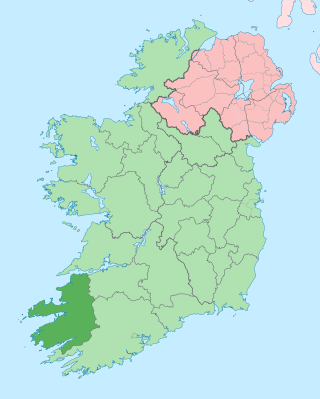
County Kerry is a county in Ireland. It is in the Southern Region and the province of Munster. It is named after the Ciarraige who lived in part of the present county. The population of the county was 155,258 at the 2022 census.

Tralee is the county town of County Kerry in the south-west of Ireland. The town is on the northern side of the neck of the Dingle Peninsula, and is the largest town in County Kerry. The town's population was 23,691 as of the 2016 census, thus making it the eighth largest town, and 14th largest urban settlement, in Ireland. Tralee is well known for the Rose of Tralee International Festival, which has been held annually in August since 1959.

Alphonse Legros was a French, later British, painter, etcher, sculptor, and medallist. He moved to London in 1863 and later was naturalized as British. He was important as a teacher in the British etching revival.
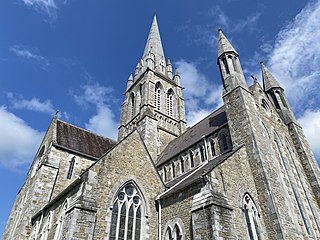
Killarney is a town in County Kerry, southwestern Ireland. The town is on the northeastern shore of Lough Leane, part of Killarney National Park, and is home to St Mary's Cathedral, Ross Castle, Muckross House and Abbey, the Lakes of Killarney, MacGillycuddy's Reeks, Purple Mountain, Mangerton Mountain, Paps Mountain, the Gap of Dunloe and Torc Waterfall. Its natural heritage, history and location on the Ring of Kerry make Killarney a popular tourist destination.
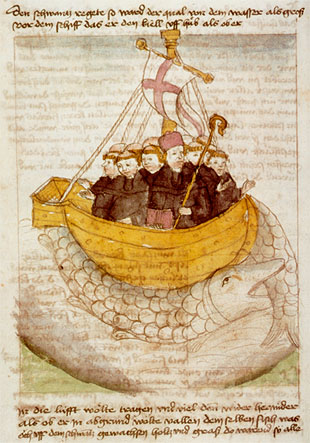
Brendan of Clonfert is one of the early Irish monastic saints and one of the Twelve Apostles of Ireland. He is also referred to as Brendan the Navigator, Brendan the Voyager, Brendan the Anchorite, Brendan the Bold. The Irish translation of his name is Naomh Bréanainn or Naomh Breandán. He is mainly known for his legendary voyage to find the “Isle of the Blessed” which is sometimes referred to as “Saint Brendan’s Island”. The written narrative of his journey comes from the immram The Navigatio Sancti Brendani Abbatis.

Ross Castle is a 15th-century tower house and keep on the edge of Lough Leane, in Killarney National Park, County Kerry, Ireland. It is the ancestral home of the Chiefs of the Clan O'Donoghue, later associated with the Brownes of Killarney.

The N22 road is a national primary road in Ireland which goes through counties Kerry and Cork, from Tralee in the west through Killarney, Macroom and Ballincollig to Cork City in the east.
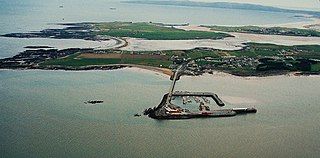
Fenit is a small village in County Kerry, Ireland, located on north side of Tralee Bay about 10 km (6 mi) west of Tralee town, just south of the Shannon Estuary. The bay is enclosed from the Atlantic by the Maharee spit which extends northwards from the Dingle peninsula. Fenit harbour is a mixed function sea port, where fishing, freight import and export, and a 136 berth marina are the main forms of business. As of the 2016 CSO census of Ireland, Fenit had a population of 538 people.

Gabriel Hayes was an Irish artist born in Dublin. She was a sculptor and medallist who studied in Dublin, France, and Italy and was also an accomplished painter.
Donoghue or O'Donoghue is an anglicized form of the Irish language surname Ó Donnchadha or Ó Donnchú.
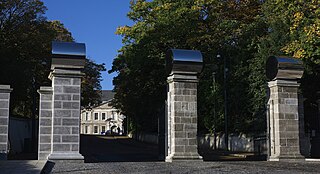
Fergus Martin was born in Cork, Ireland. He studied painting at Dún Laoghaire School of Art from 1972 – 1976. From 1979 – 1988 he lived and worked in Italy, where he lectured in English Language at the University of Milan.

Abbot Hall Art Gallery is an art gallery in Kendal, England. Abbot Hall was built in 1759 by Colonel George Wilson, the second son of Daniel Wilson of Dallam Tower, a large house and country estate nearby. It was built on the site of the old Abbot’s Hall, roughly where the museum is today. Before the Dissolution of the Monasteries this was where the Abbot or his representative would stay when visiting from the mother house of St Mary's Abbey, York. The architect is unknown. During the early twentieth century the Grade I listed building was dilapidated and has been restored as an art gallery.
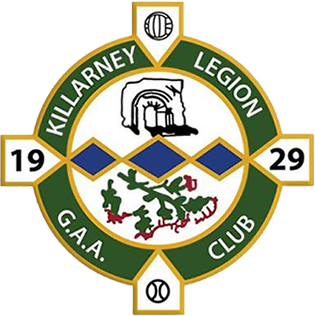
Killarney Legion are a Gaelic Athletic Association club from Killarney in County Kerry, Ireland. The club was founded on a March evening in 1929 when a group of eleven men held a meeting in the then Temperance Hall in High Street, Killarney.
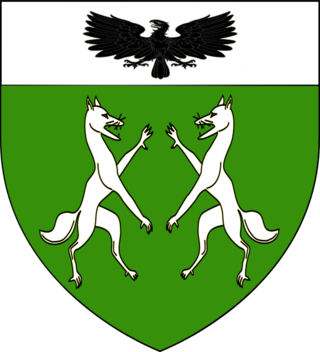
The O'Donoghue of the Glens, Prince of Glenflesk, is the hereditary chieftain of his sept of the Kerry Eóganacht, Munster, Ireland. In 1944, his father was one of the few Chiefs of the Name recognized by Edward MacLysaght, the first Chief Herald, as having a verifiable pedigree and entitled to use the title and receive courtesy recognition by the Irish State.

Peter Laszlo Peri was an artist and sculptor.

The East Kerry Board of the Gaelic Athletic Association caters for 13 Gaelic football clubs and 1 hurling club in the East Kerry division of the GAA county of Kerry.
Peter Grippe was an American sculptor, printmaker, and painter. As a sculptor, he worked in bronze, terracotta, wire, plaster, and found objects. His "Monument to Hiroshima" series (1963) used found objects cast in bronze sculptures to evoke the chaotic humanity of the Japanese city after its incineration by atomic bomb. Other Grippe Surrealist sculptural works address less warlike themes, including that of city life. However, his expertise extended beyond sculpture to ink drawings, watercolor painting, and printmaking (intaglio). He joined and later directed Atelier 17, the intaglio studio founded in London and moved to New York at the beginning of World War II by its founder, Stanley William Hayter. Today, Grippe's 21 Etchings and Poems, a part of the permanent collection at the Davis Museum and Cultural Center at Wellesley College in Wellesley, Massachusetts, is available as part of the museum's virtual collection.
Hughie O'Donoghue is a British painter.
Mike O'Donoghue is an Irish sportsperson. He plays Gaelic football with his local club Spa and the Kerry inter-county teams.
James O'Donoghue is an Irish Gaelic footballer who plays for Kerry SFC club Killarney Legion. He is a former player at senior level for the Kerry county team.


















